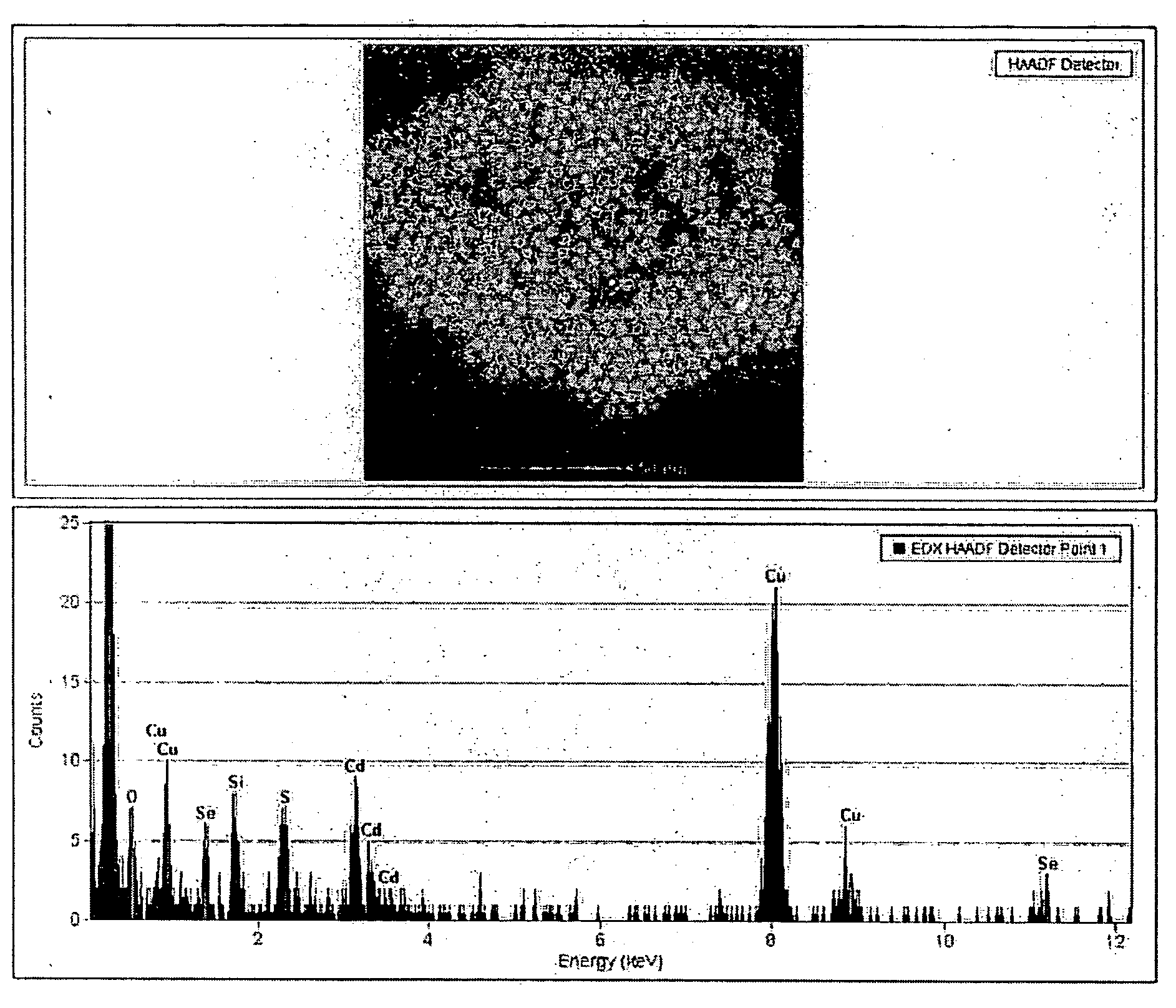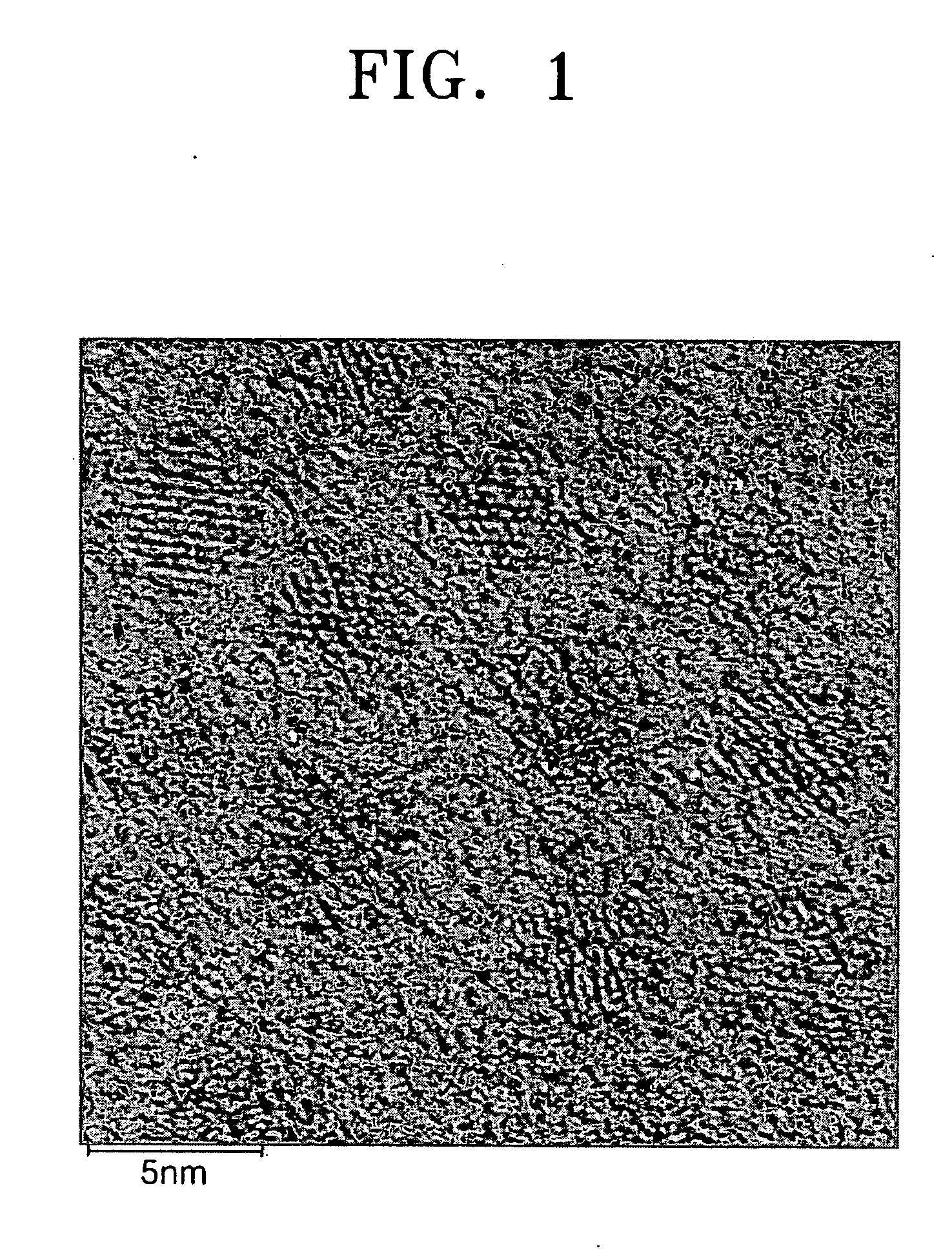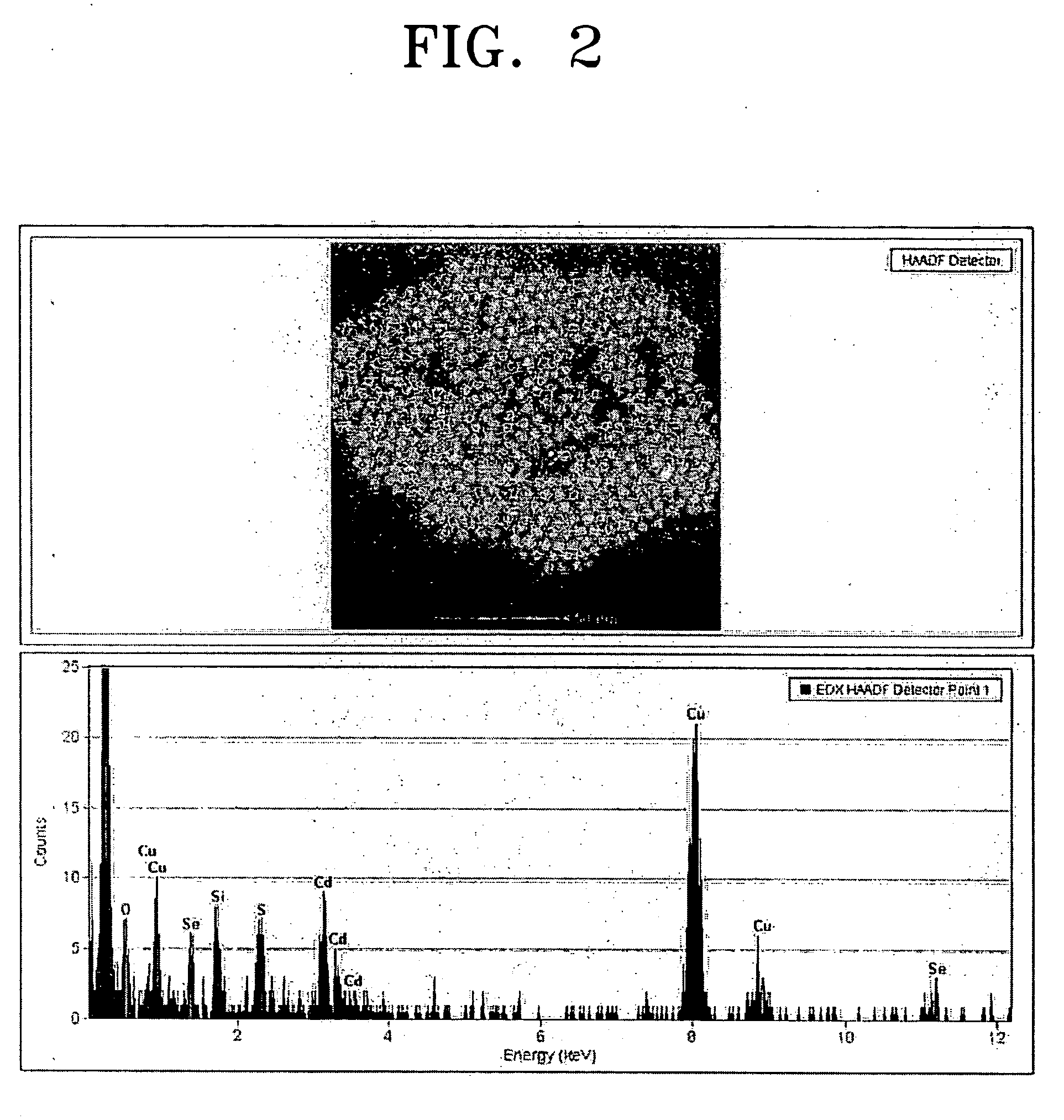Alloy type semiconductor nanocrystals and method for preparing the same
a technology of alloy-type semiconductors and nanocrystals, which is applied in the direction of crystal growth process, nanoinformatics, transportation and packaging, etc., can solve the problems of difficult to form reproducible and uniform quantum structures in solvents containing large amounts of impurities, and the method has a restriction on the solvent used, so as to achieve uniform sizes and shapes, high quantum efficiency
- Summary
- Abstract
- Description
- Claims
- Application Information
AI Technical Summary
Benefits of technology
Problems solved by technology
Method used
Image
Examples
example 1
Preparation of CdSeS Nanocrystals
[0063] 16 g of tri-octyl amine (referred to as TOA, hereinafter), 0.5 g of oleic acid, and 0.4 mmol of CdO were simultaneously placed in a 100 ml flask provided with a reflux condenser and stirred at 300° C. to obtain a Cd precursor solution.
[0064] Separately, Se powders were dissolved in tri-octyl phosphine (referred to as TOP, hereinafter) to obtain a Se-TOP complex solution with a Se concentration of about 0.1M. S powders were dissolved on TOP to obtain S-TOP complex solution with a S concentration of about 4M.
[0065] 0.5 ml of S-TOP complex solution 0.5 ml of the Se-TOP complex solution were rapidly added to the Cd precursor solution and stirred for about 4 minutes.
[0066] When the reaction of the resultant mixture was terminated, the reaction temperature was rapidly reduced to room temperature and then centrifugation was performed with addition of an ethanol as a non-solvent. A supernatant was decanted and discarded. A precipitate was disperse...
example 2
Preparation of ZnCdSe Nanocrystals
[0072] 16 g of TOA, 0.5 g of oleic acid, 0.2 mmol of zinc acetyl acetonate, and 0.2 mmol of cadmium (Cd) oxide were simultaneously placed in a 100 ml flask provided with a reflux condenser and stirred at 300° C. to obtain a Zn and Cd precursor solution.
[0073] Separately, Se powders were dissolved in TOP to obtain a Se-TOP complex solution with a Se concentration of about 0.25M. 1 ml of the Se-TOP complex solution was rapidly added to the Zn and Cd precursor solution and stirred for about 2 minutes.
[0074] When the reaction of the resultant mixture was terminated, the reaction temperature was rapidly reduced to room temperature and then centrifugation was performed with addition of an ethanol as a non-solvent. A supernatant was decanted and discarded. A precipitate was dispersed in a toluene and then a PL spectrum in the solution was measured.
[0075] The PL spectrum showed an emission wavelength of about 456 nm and FWHM of about 26 nm.
example 3
Preparation of CdSe / CdS Nanocrystals
[0076] 16 g of TOA, 0.5 g of oleic acid, and 0.4 mmol of cadmium acetate were simultaneously placed in a 100 ml flask provided with a reflux condenser and stirred at 300° C. to obtain a Cd precursor solution.
[0077] Separately, Se powders were dissolved in TOP to obtain a Se-TOP complex solution with a Se concentration of about 0.25M. 1 ml of the Se-TOP complex solution was rapidly added to the Cd precursor solution and stirred for about 4 minutes.
[0078] S powders were dissolved in TOP to obtain a S-TOP complex solution with a S concentration of about 2 M. 1 ml of the S-TOP complex solution was dropwise added to the CdSe-containing solution and stirred.
[0079] When the reaction of the resultant mixture was terminated, the reaction temperature was rapidly reduced to room temperature and then centrifugation was performed with addition of an ethanol as a non solvent. A supernatant was decanted and discarded. A precipitate was dispersed in a toluene...
PUM
| Property | Measurement | Unit |
|---|---|---|
| temperature | aaaaa | aaaaa |
| temperature | aaaaa | aaaaa |
| FWHM | aaaaa | aaaaa |
Abstract
Description
Claims
Application Information
 Login to View More
Login to View More - R&D
- Intellectual Property
- Life Sciences
- Materials
- Tech Scout
- Unparalleled Data Quality
- Higher Quality Content
- 60% Fewer Hallucinations
Browse by: Latest US Patents, China's latest patents, Technical Efficacy Thesaurus, Application Domain, Technology Topic, Popular Technical Reports.
© 2025 PatSnap. All rights reserved.Legal|Privacy policy|Modern Slavery Act Transparency Statement|Sitemap|About US| Contact US: help@patsnap.com



